Magnetic Resistance vs Contact Flywheel – A Detailed Comparison
Author:
Unlock your full potential by engaging with our experts and community! Have questions about your fitness journey or looking for expert advice on weightlifting techniques? Don’t hesitate — leave a comment below and Ihor Shymechko will provide a personalized answer and insights to help you reach your goals.
Torokhtiy is reader-supported. Some links are affiliate links, and we may earn a commission at no extra cost to you. See our disclosure page for details.
Home cardio equipment such as stationary bikes commonly operate using two main resistance systems: magnetic resistance and contact flywheels resistance.
To provide resistance, both systems act on the flywheel that’s connected to the machine’s pedals or handles. The built-in resistance system allows the wheel to spin with varying amounts of tension against it.
The differences between magnetic resistance vs contact flywheels resistance systems can make a huge difference to your overall ride experience. To help you learn more about the best system for you, I’ve compared each one in detail below.
The differences between a contact flywheel vs magnetic resistance impact overall workout experience. For example, magnetic flywheel spin bikes are quiet to operate and require less maintenance but bigger initial investment. Those with contact flywheel systems are cheaper and simulate a road bike but require more maintenance and are louder.
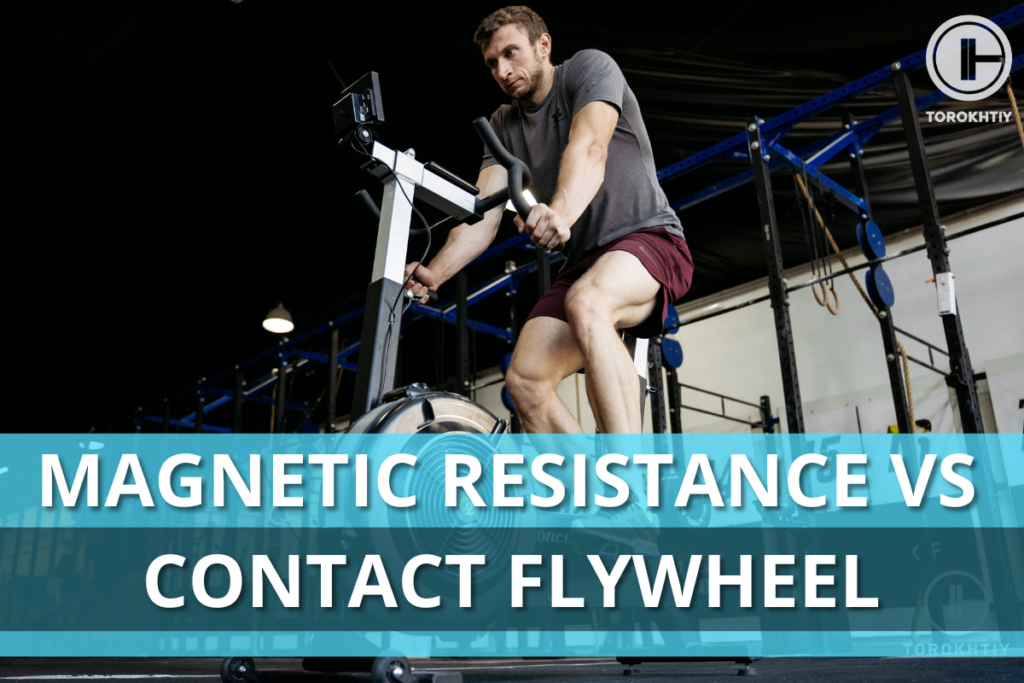
What is Magnetic Resistance?
Magnetic resistance uses two powerful magnets located parallel to one another with the flywheel sitting in the middle to create tension against the flywheel.
Once you start pedaling, the metal flywheel moves through the magnetic field created by the two magnets. The field creates a resistance that determines how fast the flywheel moves. The current resistance created by the flywheel runs perpendicular to the magnetic field in a closed-loop circuit.
When you turn the resistance knob to increase or decrease the resistance level, the magnets move closer or further away from the flywheel. As the magnets get closer, the magnetic field becomes stronger, therefore increasing the flywheel resistance. As the magnets move away, less resistance is felt on the flywheel due to the decreased magnetic field.
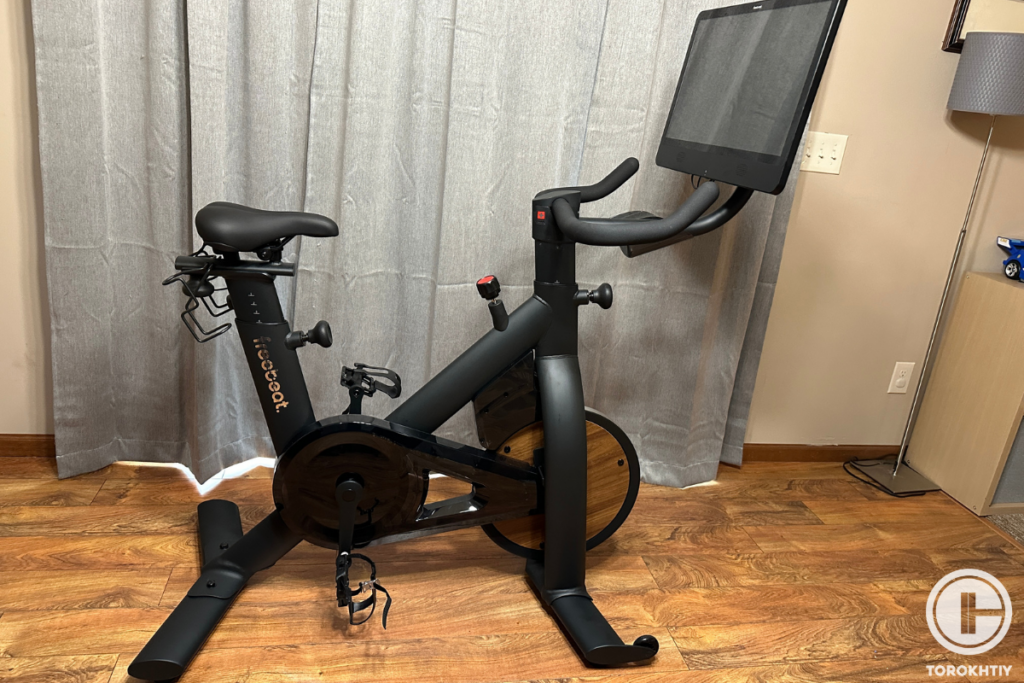
What is a Contact Flywheel?
Before magnetic resistance, friction contact resistance was the most common resistance method used in cardio equipment. It was known as the gold standard and still remains a popular choice today.
Friction resistance works as the name suggests, by trying to slide different objects past each other using the same plane of motion, therefore creating friction. In an exercise bike, fabric pads are used to apply contact pressure to the flywheel as it spins around.
The pads can be located on both sides of the wheel and ‘squeeze’ together as the amount of resistance is increased using the tension knob. A larger pad may also be located on the top of the flywheel, applying downward pressure as you cycle.
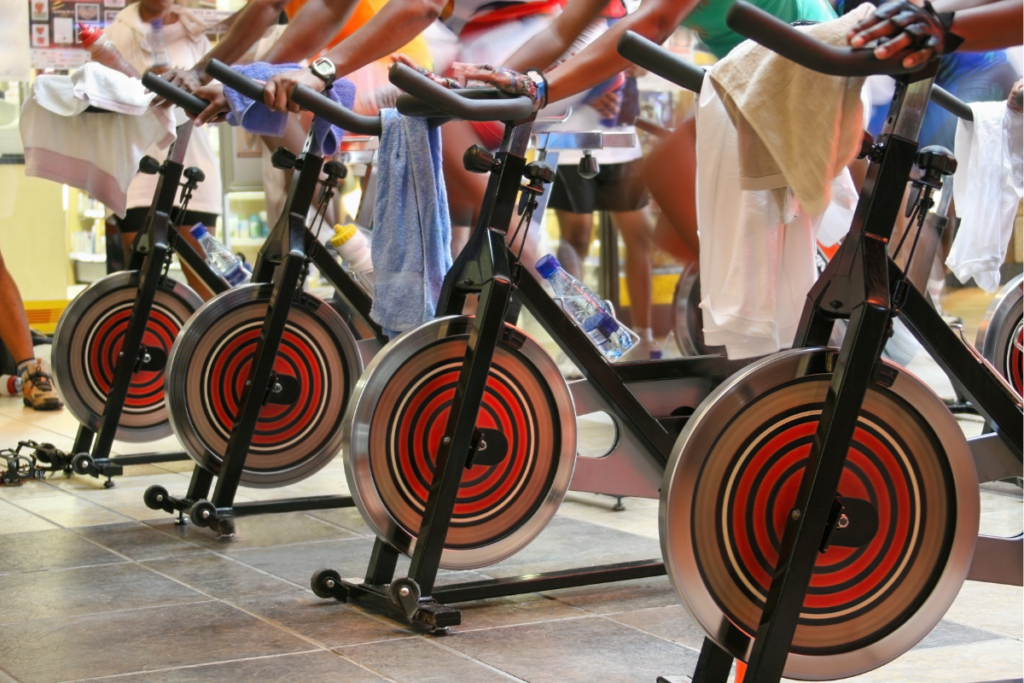
Contact Flywheel vs Magnetic Resistance
1. Workout Experience
Whilst both systems work by resisting the flywheel motion, the different ways of achieving this slightly change the overall workout experience. With a magnetic resistance system, a slight lag exists between the moment you turn the knob and when you actually feel the resistance increase or decrease. This can take some time to get used to, especially for riders who are used to the feel of road bikes.
Contact friction resistance more closely resembles the feeling experienced on a normal bike, with the resistance changing at the same time you turn the tension knob. According to user reviews, this produces a smoother, more consistent ride experience.
2. Resistance
When looking closer at both systems, we can compare the accuracy level and amount of possible resistance offered. More specifically the accuracy of resistance provided by both systems in relation to the level stated on the tension knob or console.
Magnetic resistance systems tend to be more accurate, with most bike systems using a computer where you input the resistance level and the magnets change position accordingly. Contact flywheels tend to be slightly less accurate, with differences in maintenance affecting the amount of pad material action on the wheel.
However, for most athletes, this difference is negligible, with both systems working fine to achieve normal workout goals at home or in the gym.
In terms of resistance level, both systems should be able to provide high enough levels of resistance to challenge even the most elite athletes. Magnetic resistance systems do have a fixed resistance level whilst friction-based systems allow you to go slightly higher as long as you’re able to keep pedaling.
3. Noise
If you are planning to use the bike in smaller home gym spaces, you should consider the amount of noise produced when riding d. This is especially important if you plan to use the bike early in the morning or late at night.
This is where the magnetic resistance system really shines. Compared to the friction-based contact system, it’s much quieter to operate making it more suitable for smaller gym spaces where the noise level may be an issue. The contact flywheel actually makes contact with the wheel which produces more noise compared to magnets.
4. Maintenance
Maintenance refers to the amount and frequency of work needed to keep the resistance system running correctly. This can also include the chance of components breaking down or needing to be replaced.
The initial cost is usually the main factor, but the possible required maintenance should still be considered in the budget. Due to the common placement of contact flywheels at the front of the bike, the sweat produced when working out can lead to the erosion of mechanical components. The friction pad used also needs to be replaced periodically as it will wear down with repeated flywheel contact.
Magnetic resistance systems also require maintenance, but on average this needs to be done less frequently. This is due to the system not needing to contact the flywheel to change the resistance level. The flywheel is also more commonly located at the back of the bike, meaning less chance of body fluids wearing down the components.
5. Price
In terms of price, friction-based resistance systems tend to have a lower initial cost. Magnetic resistance systems usually cost more to manufacture making the initial price point higher. With this, make sure to consider the points regarding maintenance costs above.

Magnetic or Contact Spin Bike: A Summary
Both resistance systems offer excellent ways of generating force against the flywheel to increase and decrease the difficulty level.
Magnetic resistance systems are quieter to operate and require less maintenance but are more expensive and can be hard to get used to if you’re used to a normal road bike. According to user reviews, contact friction systems offer a smoother ride experience and cost less but can require more maintenance and are louder to operate.
| Evaluation of Criteries | Magnetic Resistance | Contact Friction Resistance |
|---|---|---|
| Ease of Use | Yes | Yes |
| Accuracy of Resistance | Very good | Good |
| Level of Resistance | Good | Good |
| Maintenance | Low | Moderate |
| Noise | Quiet | Noticeable |
| Price | Noticeable | Moderate |
1. Pros and Cons of Magnetic Resistance
So, is magnetic resistance better? Here are the pros and cons to help you choose:
Positives:
Could be better:
2. Pros and Cons of a Contact Flywheel
Positives:
Could be better:

Flywheel or Magnetic Resistance: What We Recommend?
Should I choose a magnetic or belt spin bike? Here are our recommended bike choices for each system I’ve discussed above:
The Schwinn Fitness indoor cycling bike
- Dimensions: 54.6” L/ 30.7” W/ 51.8” H
- Display: Full color LCD
- App: JRNY
- Bluetooth: Yes
- Drive System: Magnetic resistance
- Product Weight: 113.6 lbs
- Maximum User Weight: 330 lbs
- Warranty: 1 year for electronics, 90 days for labor, 10 years for frame, 3 years for parts
- Third-Party Connectivity: Zwift, Peloton apps
- Special Features: 100 resistance levels, 2 bottle holders, 1.5 kg Dumbbell Cradles (dumbbells not included)
The Schwinn Fitness indoor cycling bike sits on top of our recommended list, offering 100 levels of smooth magnetic resistance via the tension knob located at the front of the bike frame.
The magnetic flywheel spin bike features a fully adjustable design, with 4-way adjustable handlebars and a padded seat that adjusts horizontally. The dual-sided pedals feature SPD clips for cycling shoes and toe cages keeping normal athletic shoes in place.
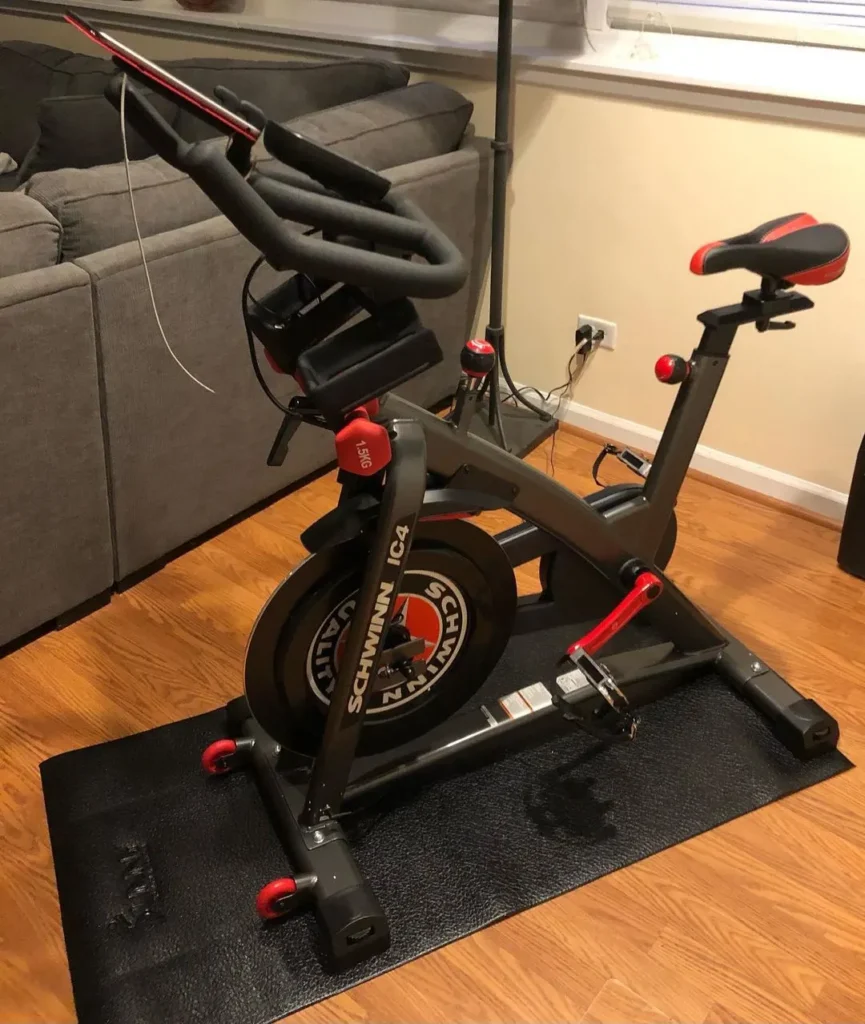
The device holder at the front of the bike is compatible with your tablet or phone, with the large LCD console underneath displaying time, calories burned, distance, and speed.
Schwinn Fitness provides a great overall package, with the bike, a pair of 3-pound dumbbells, a BlueTooth HR armband, and 1-year JRNY membership included with each purchase.
Sunny Health & Fitness Premium Cycling Exercise Bike
- Dimensions: 49” L/ 20” W/ 47” H
- Seat Dimensions: 10.5” L/ 6” W/ 2” H
- Maximum User Weight: 300 lbs
- Flywhell Weight: 40 lbs
- Handlebar Adjustment: Up/Down
- App: SunnyFit
- Pedal Type: Clip-in/Caged
- Warranty: 3 year structural frame, 180 days other parts and components
- Special Features: emergency stop brake, bottle holder, 4-way adjustable seat, multi-grip handlebars
The Sunny Health & Fitness Premium Cycling Exercise Bike uses a belt drive friction system, with a 40-pound flywheel and leather friction pad to closely match the experience of using a road bike outdoors.

The multi-grip bike handles adjust vertically giving you multiple hand positions and therefore more comfortable ride experience. The seat adjusts vertically and horizontally, allowing you to adopt the perfect position.
The dual-sided pedals allow you to slip into professional cycling shoes or use the foot cages for normal athletic shoes. The bike includes a convenient water bottle holder at the front of the frame and handy transport wheels, allowing you to move the bike around with ease. The floor stabilizers keep the bike secure and allow you to operate it on uneven home flooring.
FAQ
Does the Flywheel Weight Matter With Magnetic Resistance?
Whether magnetic or friction-based resistance is used, flywheel weight will impact the overall ride experience. A heavier flywheel is designed to act more like a real road bike, with more momentum meaning it takes more time to slow the wheel down. This also allows a smoother ride experience.
Lighter flywheels are easier to start and stop and usually better for joint health than heavier ones.
Do Magnetic Resistance Bikes Need Electricity?
A magnetic resistance spin bike needs electricity to fully function however it can still be used as a stationary bike without being plugged in. The magnet resistance system needs electricity to change the resistance and operate the LCD screen functions.
Conclusion
Magnetic resistance operates using magnets that create a magnetic field around the flywheel. They are quiet to operate and require less maintenance but can be more expensive initially. Contact flywheels use a friction pad that applies pressure against the flywheel.
They offer a workout experience similar to a road bike and cost less but can require more maintenance and produce much more noise due to the flywheel contact. All in all, no matter what type of bike you choose, any of them will bring a lot of benefits to your health.
Which resistance system do you prefer? Can you notice a difference when cycling? Let me know in the comments below!
Also read:
- Best Type of Exercise Bike to Rehab Knee
- Is Exercise Bike Good for Weight Loss
- 1 Month Exercise Bike Results
- Home Gym Flooring Guide
References:
- Get the Most Out of Stationary Bicycle Workouts // VeryWell: https://www.verywellfit.com/how-to-use-a-stationary-bike-3120808
- Indoor Cycling Class Benefits // Health Line: https://www.healthline.com/health/benefits-of-a-spin-class#benefits
- Photos made by Torokhtiy Media Team; photo by poco_bw, Canva.
Why Trust Us?
With over 20 years in Olympic weightlifting, strength training, nutrition coaching, and general fitness our team does its best to provide the audience with ultimate support and meet the needs and requirements of advanced athletes and professional lifters, as well as people who strive to open new opportunities and develop their physical capabilities with us.
By trusting the recommendations of our certified experts in coaching, nutrition, and sports training programming, as well as scientific consultants, and physiotherapists, we provide you with thorough, well-considered, and scientifically proven content. All the information given in the articles concerning workout programming, separate exercises, and athletic performance, in general, is based on verified data.
The product testing process is described in more detail here.
Author: Ihor Shymechko
Pro Olympic Weightlifter, Coach
Best Results: Snatch – 208 kg,
C&J – 240 kg
Ihor has been a professional weightlifter since 1996, boasting over two decades of competition experience. His notable achievements include clinching the European Championship in 2009 and securing a silver medal in the 105kg division at the Senior World Championships in 2011. Ihor represented his country in the 2008, 2012, and 2016 Summer Olympics. After retiring from competitive weightlifting, he transitioned to coaching, leveraging his vast experience to guide athletes who now compete on both national and international stages.



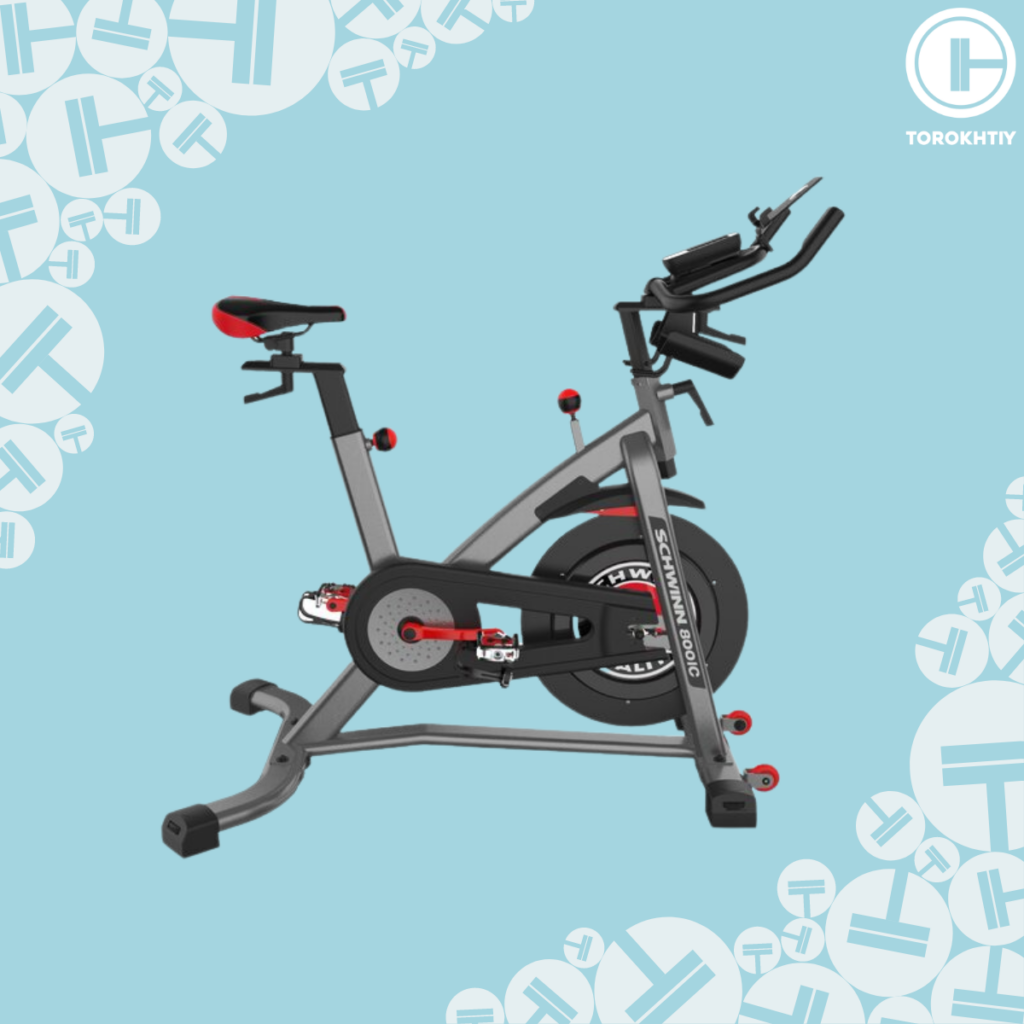
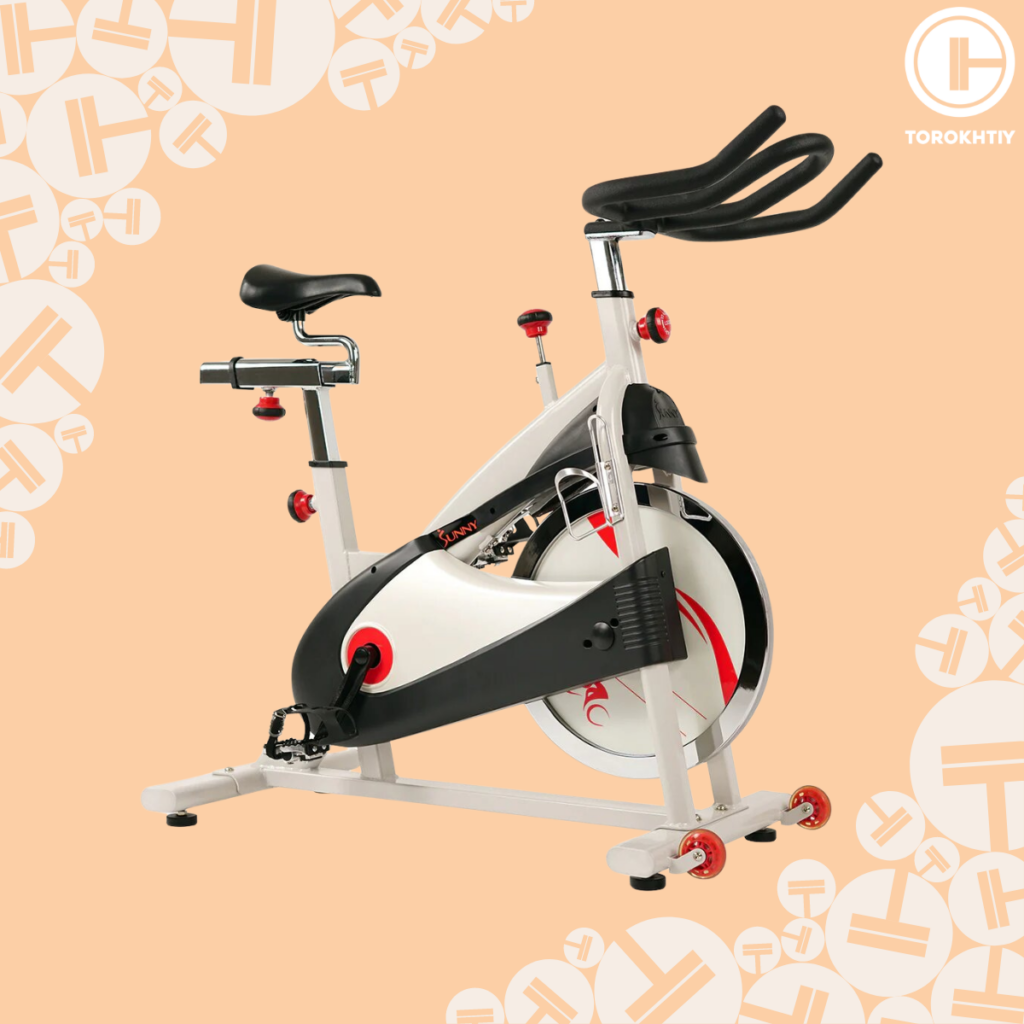
Still have questions after reading our article? Unlock your full potential by engaging with our experts and community! Don’t hesitate — leave a comment below and Ihor Shymechko will provide a personalized answer and insights to help you reach your goals.